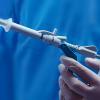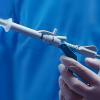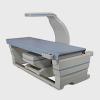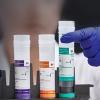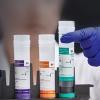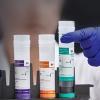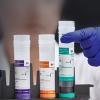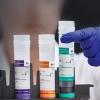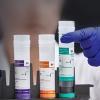Global Insight: Breast and Cervical Screening Programmes Now and in the Future

Information Exclusively Intended for Healthcare Professionals
Long-Standing Cancer Screening Programmes Can Save Lives
Screening programmes in breast and cervical cancer have been in place in many countries for decades now – a 2020 paper estimated over 20,000 women’s lives in Europe are saved through breast screening annually.1 Another review on the effect of cervical cancer screening on mortality in Europe found that mortality reduction ranges from 41% to 92%.2
However, we cannot afford to be complacent. We still need women to come forward and attend screening, and when they do attend, be sure that a suitable method will be used to give an accurate result. In recent years, there has been a worrying trend of declining attendance in many countries, for example the Netherlands,3 and each woman who does not have a screening represents an opportunity missed to detect cancer as soon as possible.
What Is the Current State of Play with Breast and Cervical Screening Programmes?
While there are well-established cervical screening programmes across Europe, there is very little homogeneity in how they are implemented. Some countries, like the Sweden and the Netherlands, have introduced HPV-based screening instead of cytology-based screening,4 whereas others continue to rely on cytological methods. In many countries, there are different approaches according to the age of the woman being tested. For example, Czechia has recently introduced co-testing, combining an HPV test with conventional cytology at 35 and 45.5
The different testing methodologies and patchy data collection across the region make it extremely difficult to evaluate cervical cancer disease outcomes.6 The picture is further confused by the fact that opportunistic screening can provide the bulk of coverage in some countries, with government-organised screening falling far short of the WHO recommended level of 70% coverage.7
Breast cancer screening also has degrees of variability, with different implementations and disparities between nationally organised screening programmes and opportunistic screening.1
Evidently, having an established screening programme of any kind can save lives and is preferable to having nothing in place, but there is much room for improvement and standardisation in cervical and breast cancer screening. While a blanket approach would not be appropriate given the different economic circumstances and healthcare systems in each country, there is an urgent need to establish best practices and facilitate implementation on a national/regional level.
Opportunities to Optimise Breast and Cervical Cancer Screening Programmes
There are three key areas that can help to strengthen screening programmes across the Europe, which we discuss below.
Firstly, adopting a risk-based approach. Risk-based screening based on assessment of each person’s individual risk has been a constant in conversations about the future of breast cancer diagnosis. In practice, there are several factors that impact individual risk and there have been a number of risk models developed to assess them, however these have focused on Caucasian women in North America and Western Europe.8 Clearly, the risk modelling needs to be more sophisticated and account for multiple factors, as well as reflecting a more diverse population, but there are some recognised factors that can already inform frequency and modality of screening e.g. breast density.8
Adopting a risk-based model for screening would undoubtedly present logistical challenges when compared to a standardised approach for all, but there are some encouraging signs where it has been implemented. For example, areas in Canada that offered annual mammography screening to women with dense breast tissue saw lower rates of interval breast cancers compared with locations that offered biennial screening, according to a study published in 2019.9
Secondly, continued education on the importance of screening must be a cornerstone of all strategies driving attendance. Access to quality health information is one of the key opportunities identified by McKinsey in its recent report on addressing the women’s health gap,10 so it’s critical we do not miss any opportunities to highlight the positive impact of screening and communicate clearly with women so they know what to expect.
Finally, we must embrace the possibilities of AI. As the disease burden increases and the volume of images grow, workflow prioritisation will be essential in both digital mammography and cytology imaging. Over time, as the evidence base develops, the discussion can also expand to it replacing a reader.
Keeping Women Screened
If we are to reverse a trend of flat or declining attendance, we need to change something. The measures we have outlined above will not be easy, but we must demand more from screening programmes to ensure they are serving women as effectively as possible.
Zielonke N, Kregting LM, Heijnsdijk EAM, Veerus P, Heinävaara S, McKee M et al. The potential of breast cancer screening in Europe. Int. J. Cancer. 2021;148: 406–418
Jansen EEL, Zielonke N, Gini A, Anttila A, Segnan N, Vokó Z et al. EU-TOPIA consortium. Effect of organised cervical cancer screening on cervical cancer mortality in Europe: a systematic review. Eur J Cancer. 2020;127:207-223.
Aitken CA, Kaljouw S, Siebers AG, Bron M, Morssink A, van Kemenade FJ et al. Investigating the decrease in participation in the Dutch cervical cancer screening programme: The role of personal and organisational characteristics. Prev Med Rep. 2021 Feb 20;22:101328.
Maver PJ, Poljak M. Primary HPV-based cervical cancer screening in Europe: implementation status, challenges, and future plans. Clinical Microbiology and Infection. 2020;26:579-583
DOPORUČENÉ POSTUPY ČGPS ČLS JEP. Doporuceni pro implementaci HPV DNA testu do screeningu karcinomu delozniho hrdla v České republice. Gyn Por.2/ 2021 Jan. 1-2 p.
Wang W, Arcà E, Sinha A, Hartl K, Houwing N, Kothari S.Cervical cancer screening guidelines and screening practices in 11 countries: A systematic literature review. Preventive Medicine Reports. 2022; 28: 101813
World Health Organisation. [Internet]. Cervical Cancer Elimination Initiative. [Cited April 2024]. Available from: https://www.who.int/initiatives/cervical-cancer-elimination-initiative
Brentnall AR, Cuzick J. Risk Models for Breast Cancer and Their Validation. Stat Sci. 2020 Mar 3;35(1):14-30.
Seely J M, Peddle S E, Yang H, Chiarelli A, McCallum M, Narasimhan G. Breast Density and Risk of Interval Cancers: The Effect of Annual Versus Biennial Screening Mammography Policies in Canada. Canadian Association of Radiologists Journal, 2022; 73(1):90-100 Available at: https://journals.sagepub.com/doi/10.1177/08465371211027958
McKinsey Health Institute. [Internet] Closing the women’s health gap: A $1 trillion opportunity to improve lives and economies. [Cited April 2024.] Available from: https://www.mckinsey.com/mhi/our-insights/closing-the-womens-health-gap-a-1-trillion-dollar-opportunity-to-improve-lives-and-economies



